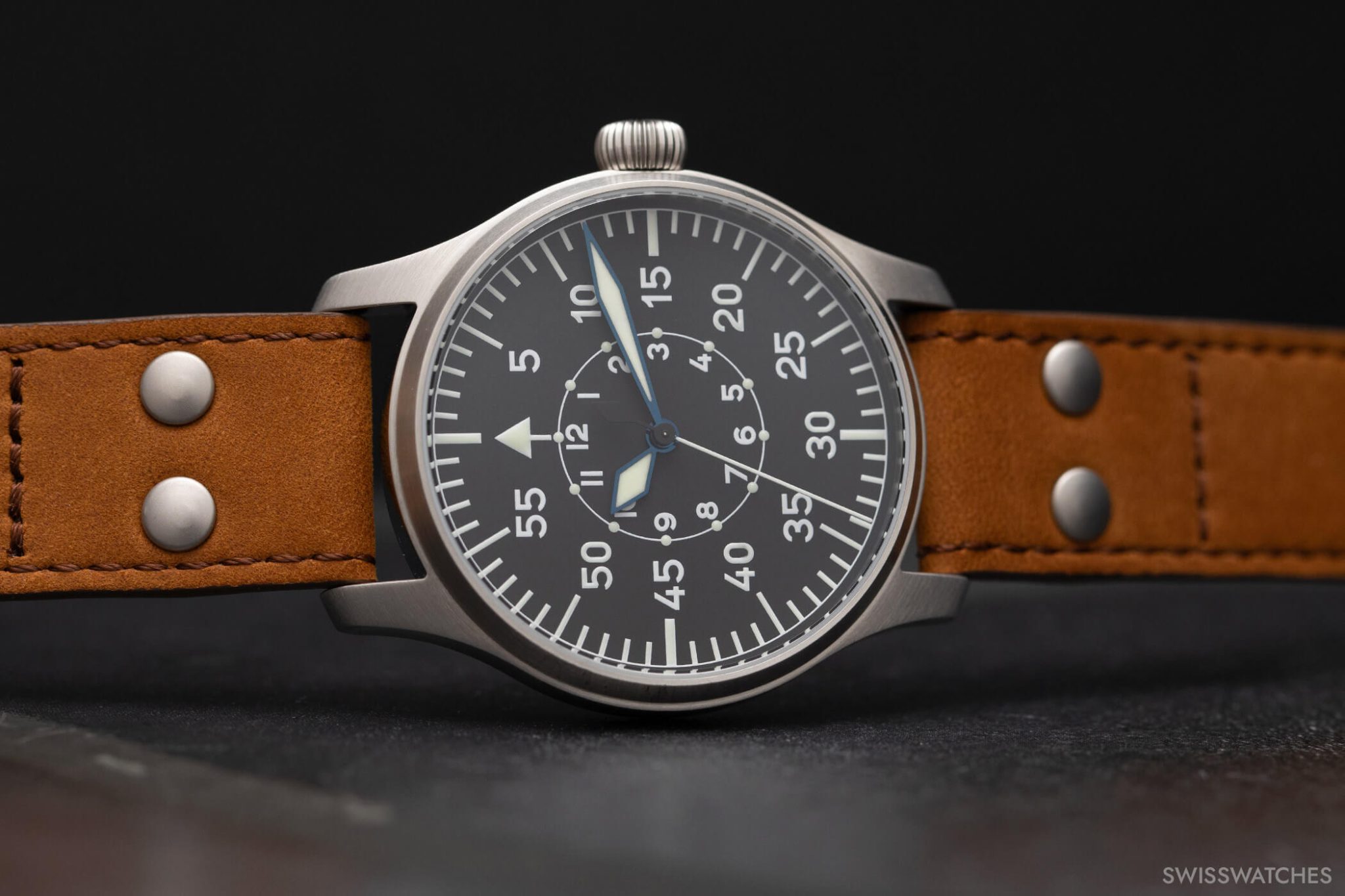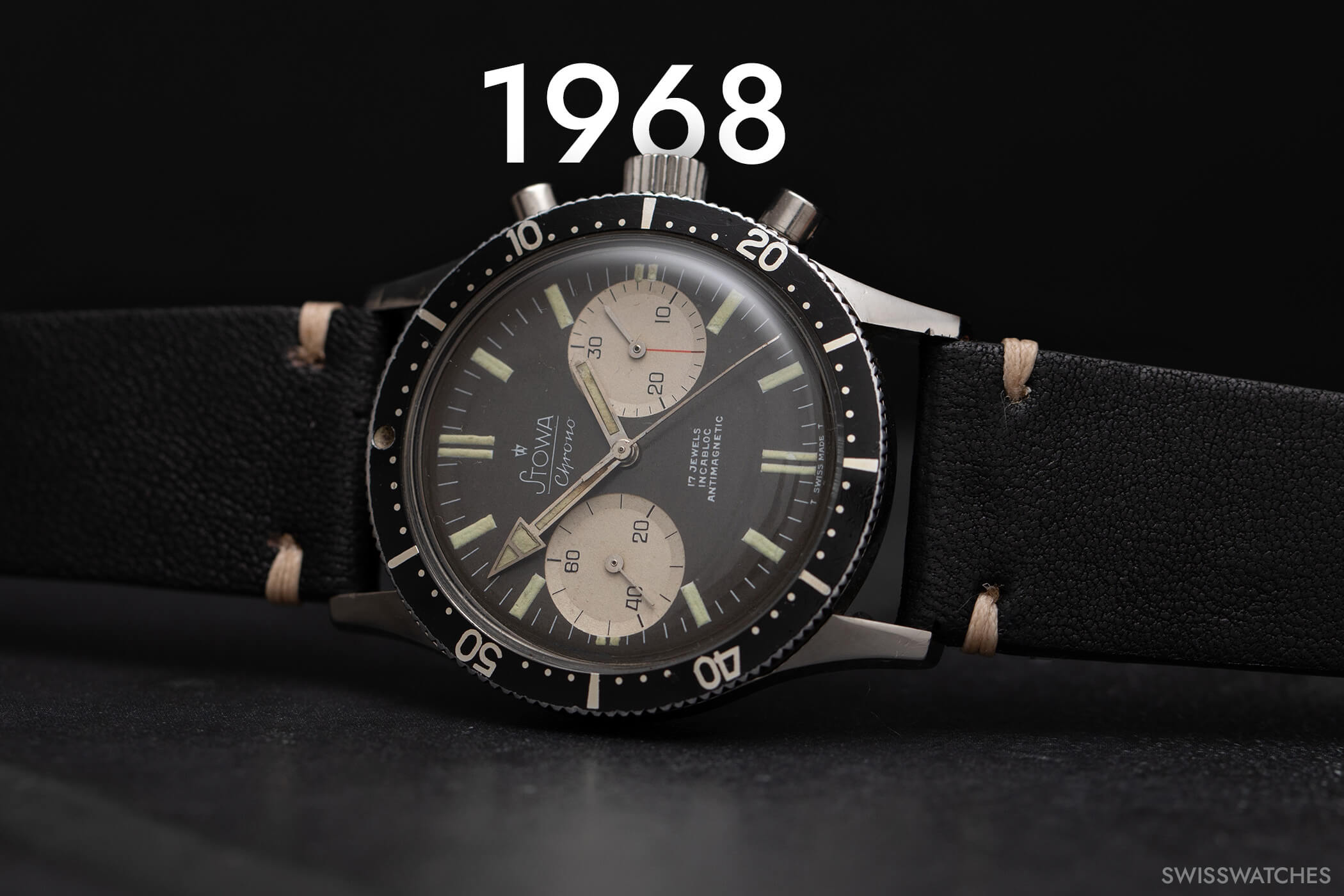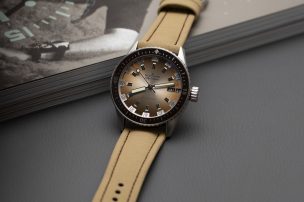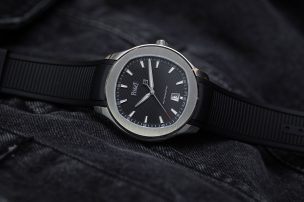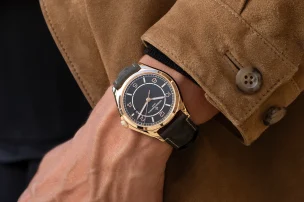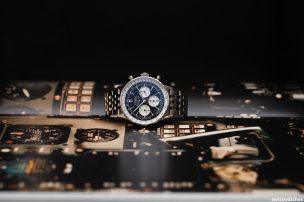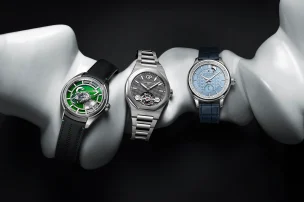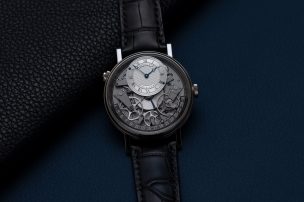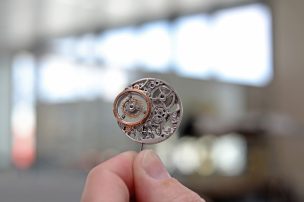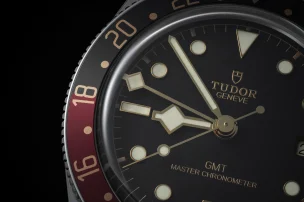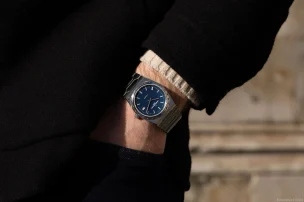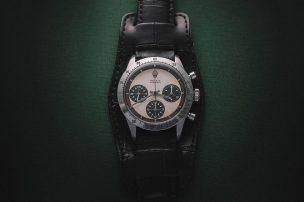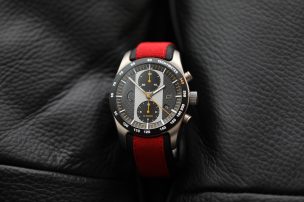
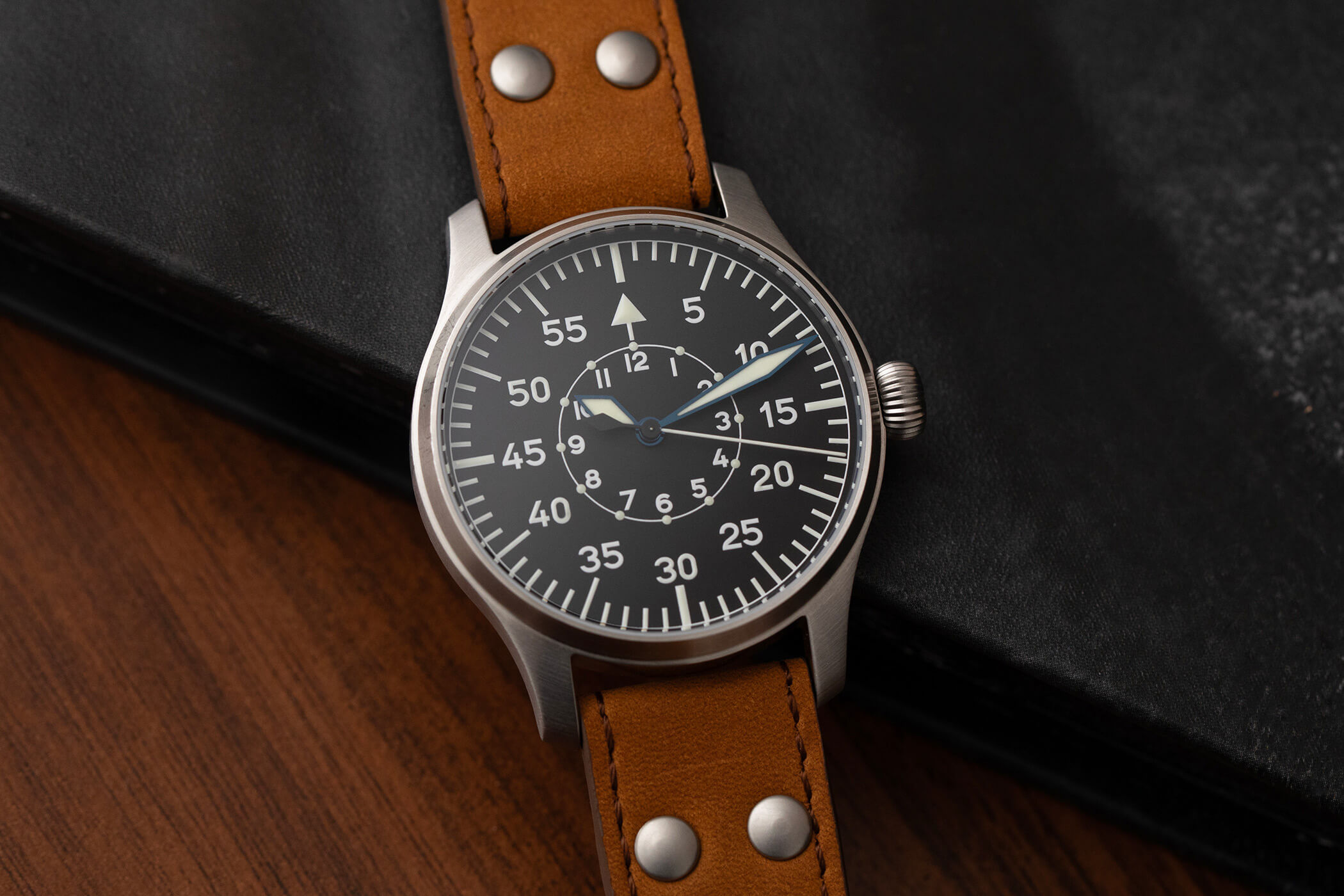
The Stowa Pilot’s Watch: Modern History on the Wrist
The German watch brand Stowa has undergone an impressive range of developments over the course of its history. Around 1937, ten years after its foundation, Stowa began manufacturing watches in the Bauhaus style – a rarely implemented design at the time. Its original manufacturing building was completely destroyed by a bombing raid in 1945, but Stowa has reinvented itself time and again: from simple panda-style chronographs of the 1960s to futuristic-looking digital watches during the quartz crisis, to the ‘Mini-Park’, a watch designed to minimise the risk of parking tickets when using parking meters.
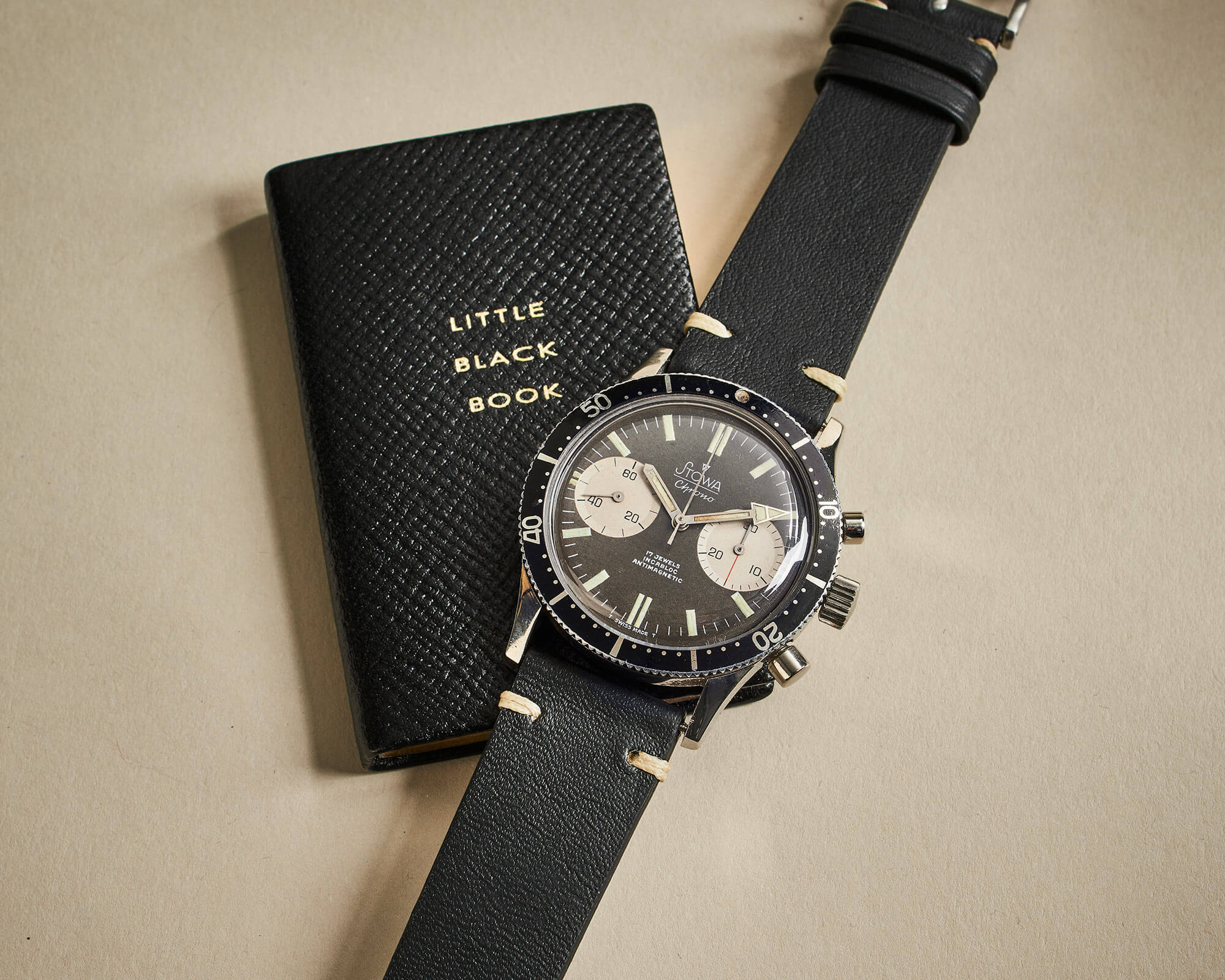
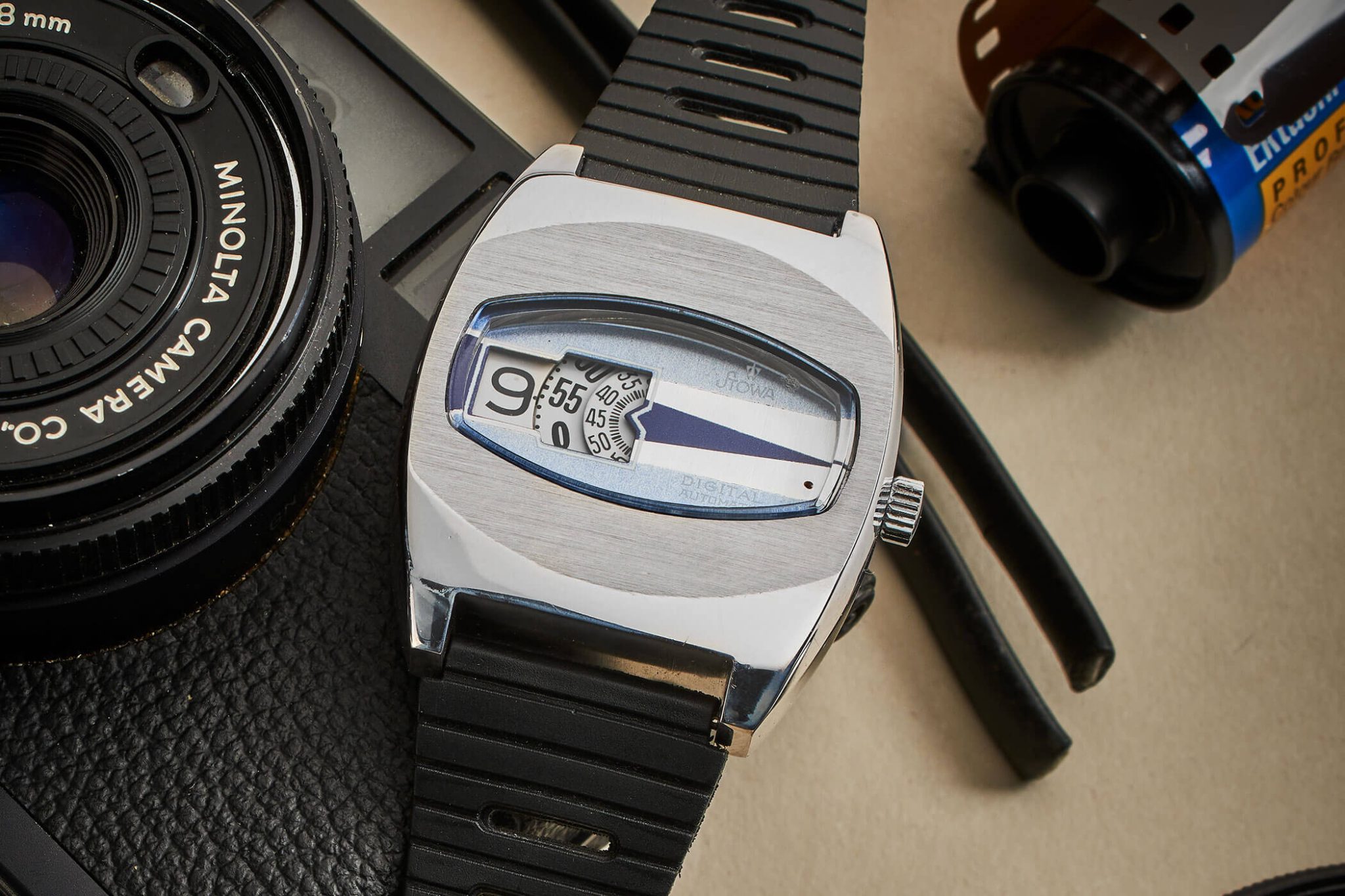
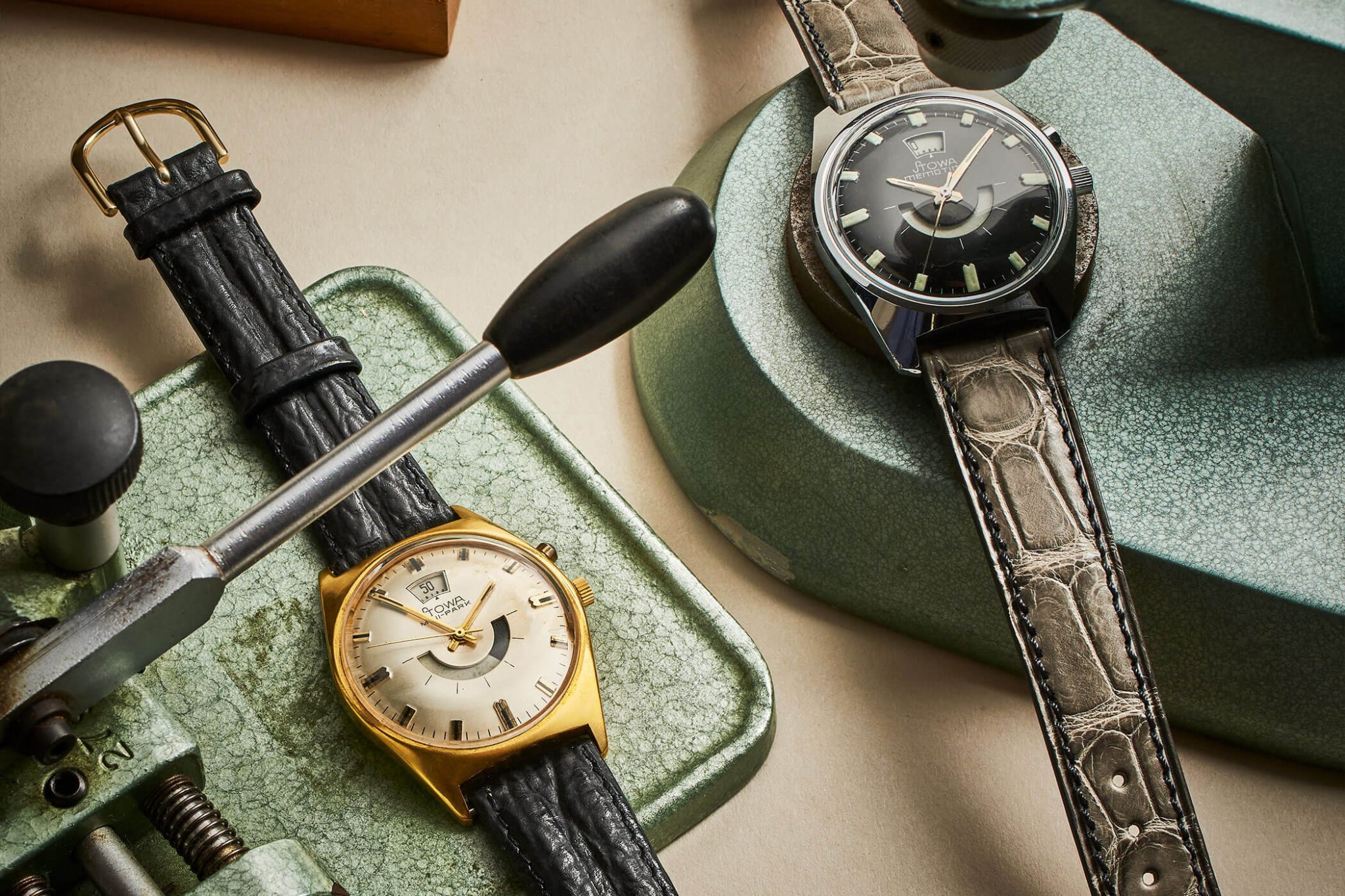
Yet there is one model with a particularly deep historical connection harking back to the 1940s that is more emblematic of the brand than any other watch: the pilot’s watch, known at Stowa as the Flieger collection (German for pilot). It is no coincidence that more than half of the watches sold by Stowa today come from the pilot’s watch line. But what characteristics make the Stowa pilot’s watch so special and why do they still enjoy such a lively collector’s community today? We embarked upon a search for clues.
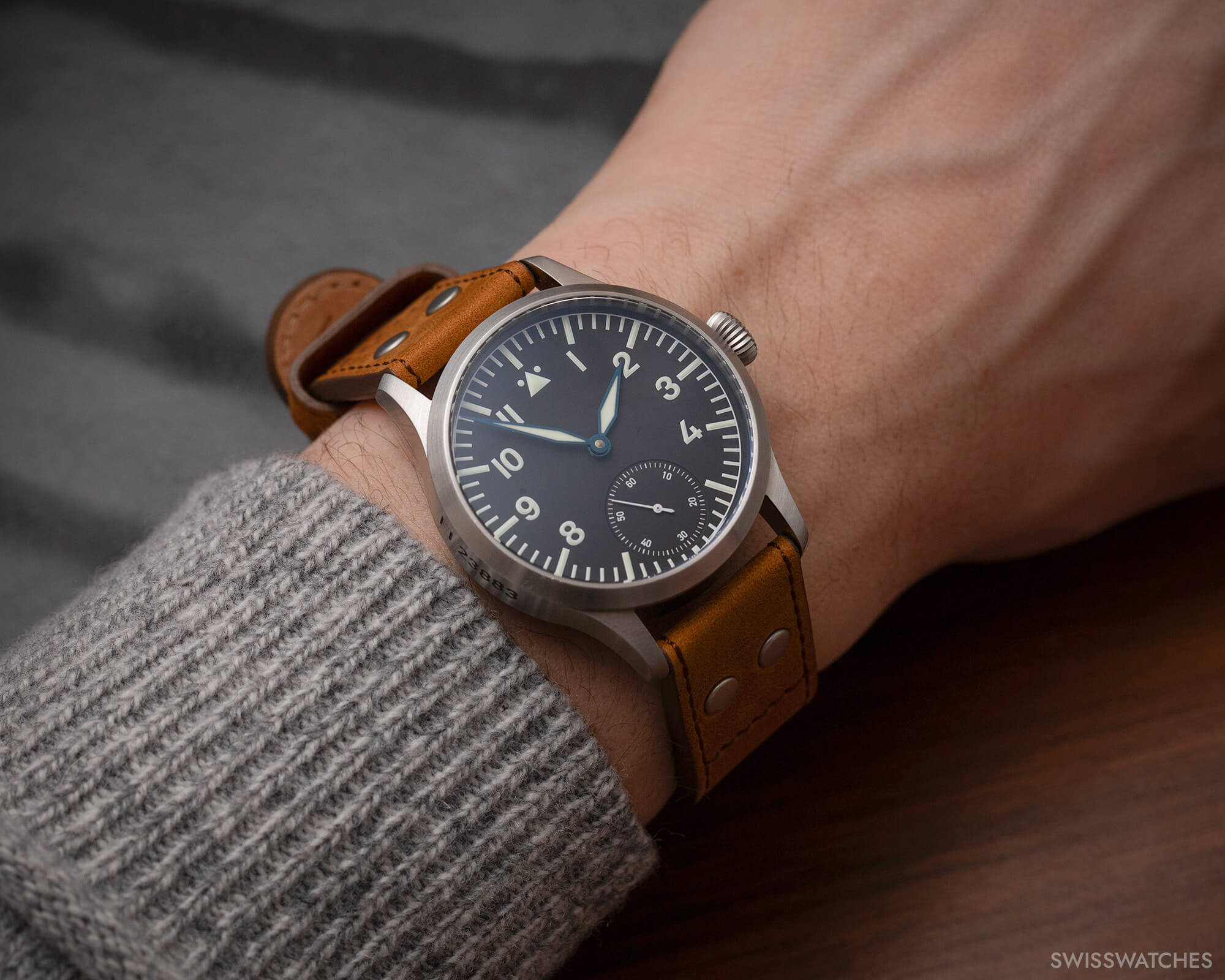
The Flieger Classic 6498 with a small seconds display
Stowa through the ages
Stowa was founded by Walter Storz in the German town of Hornberg, situated in the Black Forest, in 1927. In order to set itself apart from its competitors, the brand decided as early as 1937 to produce watches in the so-called Bauhaus style, a design language that was still only being embraced by a few manufactures at the time. Instead of focusing on the eye-catching, Stowa concentrated on the essentials: watches that focused on function through a simple dial, filigree hands and indexes and robust cases.
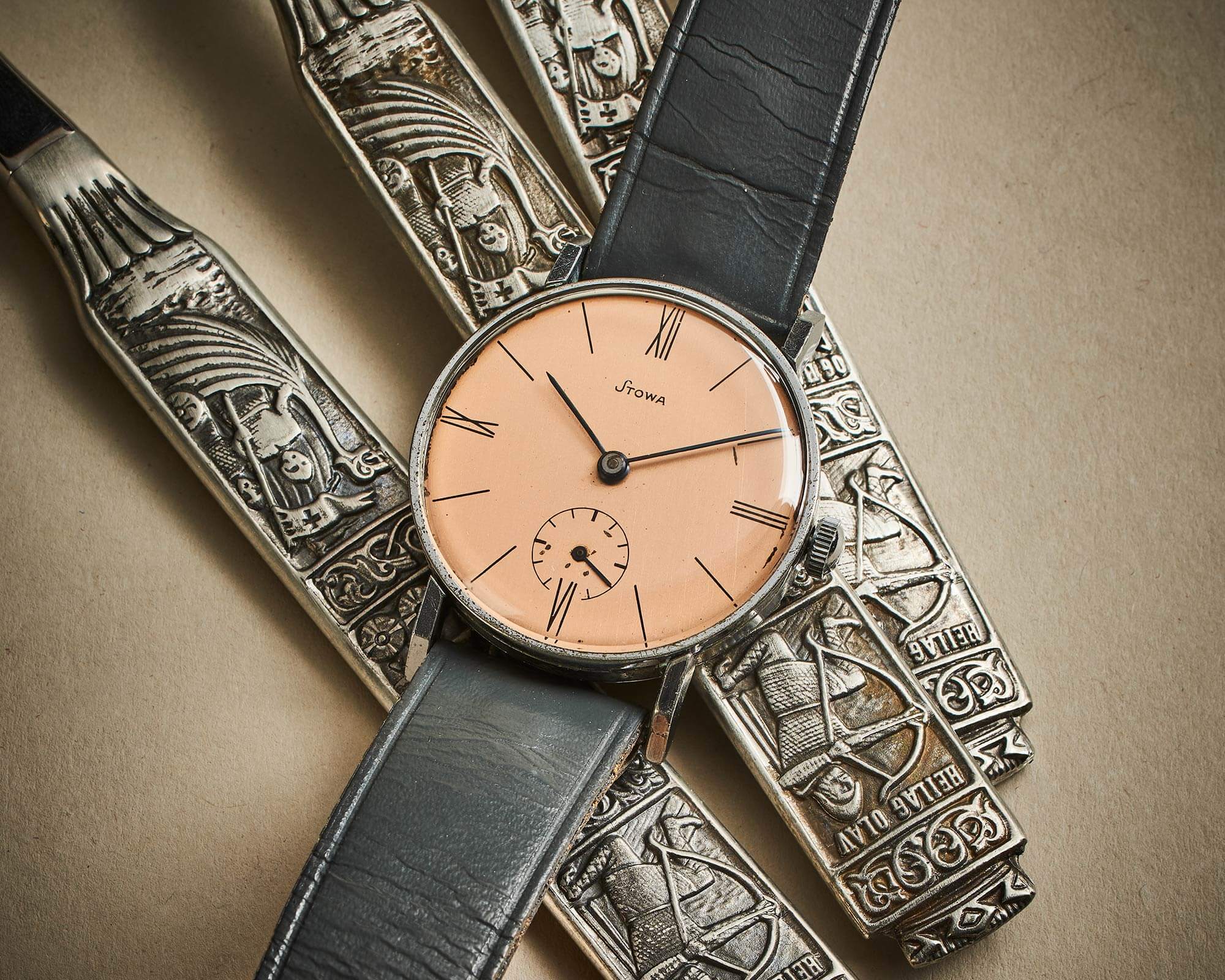
But then, in the last year of the Second World War, their factory building was completely destroyed during the bombing of Pforzheim and production was moved to Rheinfelden in the same year. With the help of this production facility, which was expanded in both 1954 and 1966, Stowa was able to successfully navigate through the different eras and fashion styles and reinvent itself time and again.
Then and now: the historic Stowa Big-Eye Chronograph and today’s Tempora Chronograph
Over the decades, through all past and current watch collections such as the Flieger, Marine and Chronograph, the brand has remained true to its values. The focus, therefore, still remains steadfastly on simple elegance and functionality.
The history of the observation watch
A crucial part of Stowa’s company history, as well as its current business model, is the role of the German pilot’s watch. The origins of the German pilot’s watch date back to 1935, when the RLM (Reich Aviation Ministry) drew up the plans and requirements that a timepiece had to fulfil in order to be called a B watch (observation watch). According to construction instruction Fl. 23883, the German pilot’s watch had to be fitted with oversized onion crowns so that it could be wound with gloves, have a Breguet balance spring, and be tested as a chronometer.
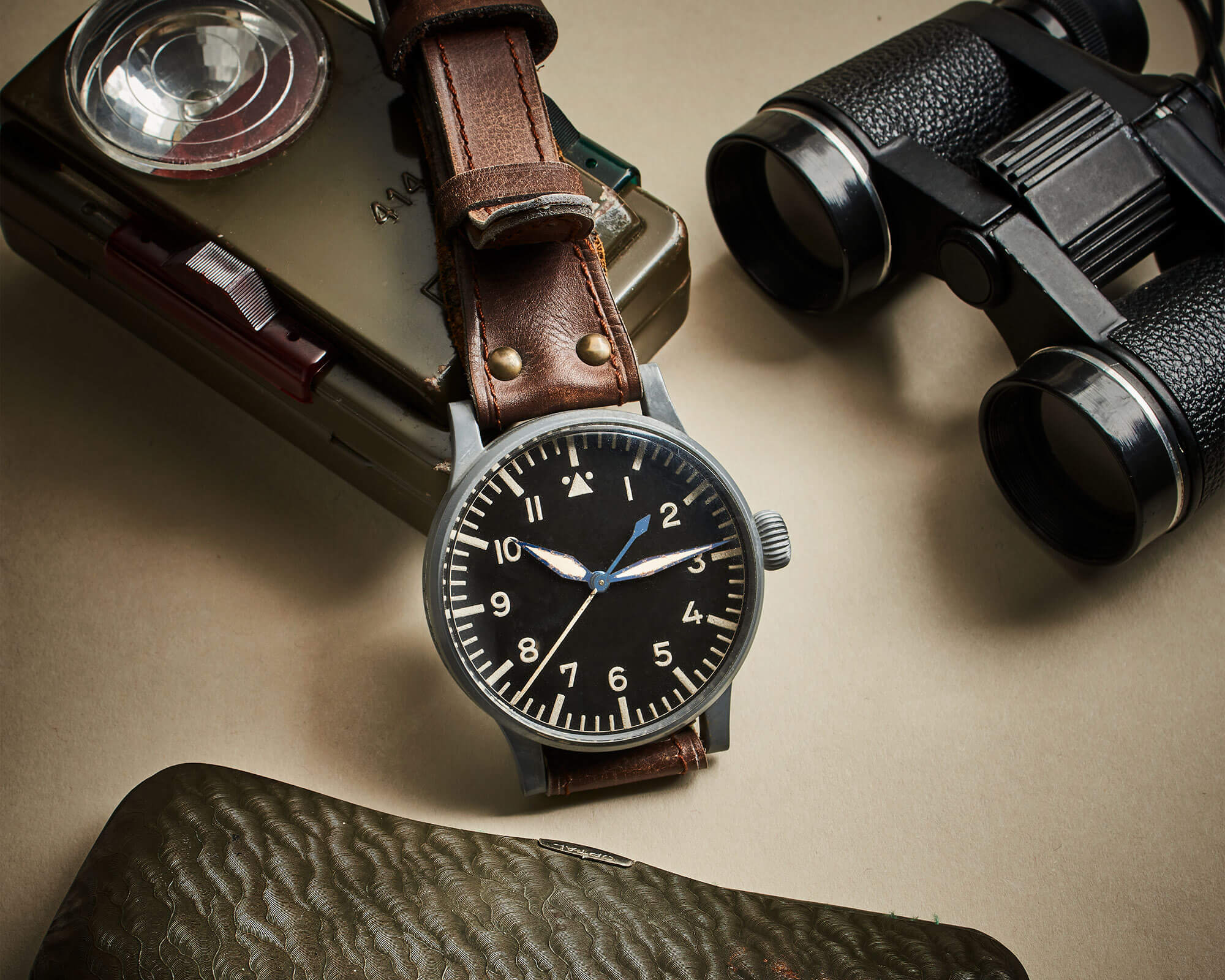
The original pilot’s watch according to construction instruction Fl. 23883
Other requirements included a balance stop function – i.e. the second hand stops when the crown is pulled out so that the watch can be set to the exact time – and a long leather strap that sealed the watch to the wrist over the pilot’s jacket. It also had to be large, namely a proud 55 mm in diameter. This size and the high-contrast black dial with white Arabic numerals coated with luminous material also made it legible at night.
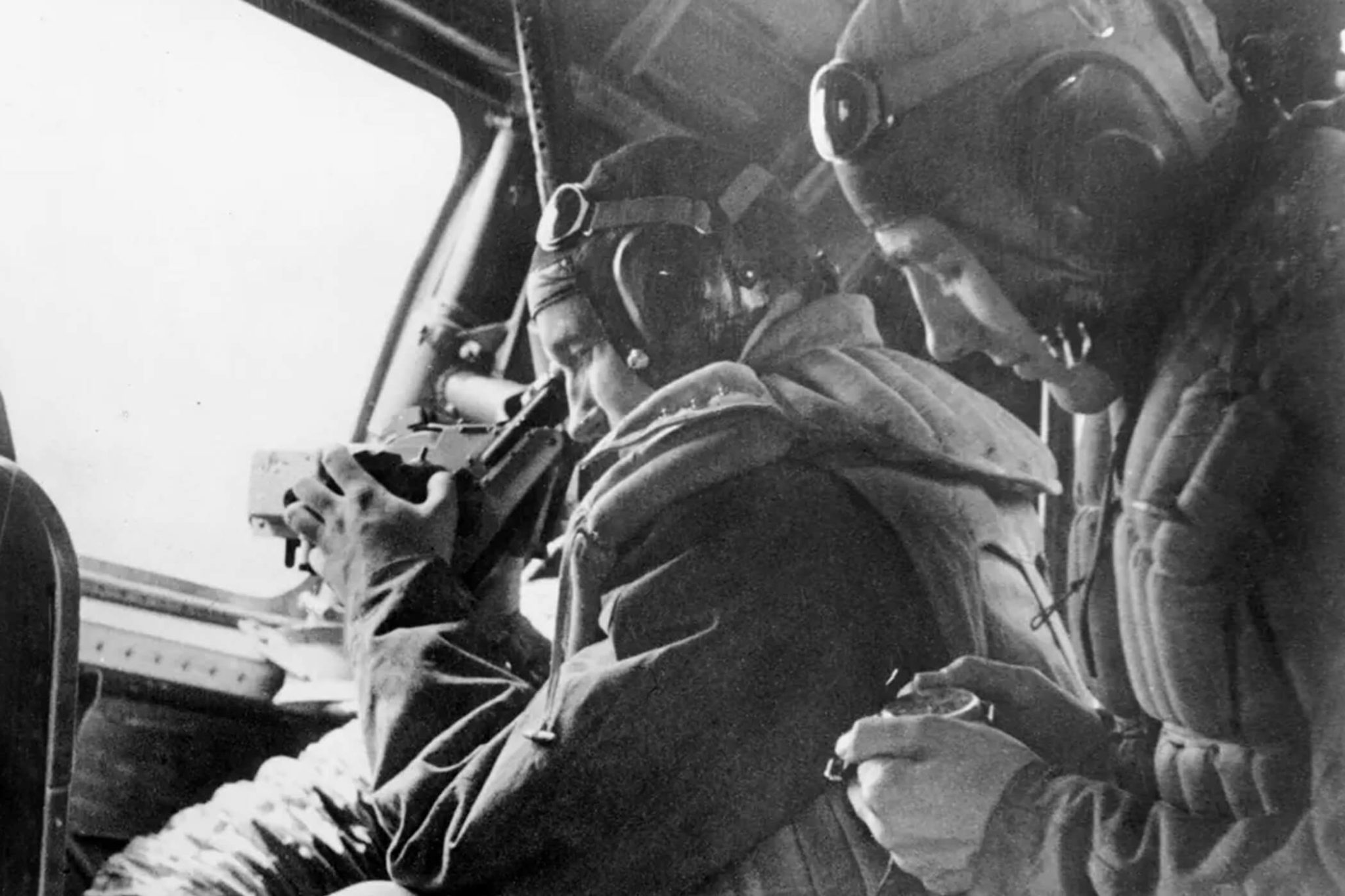
In 1940, in order to realise these plans, the Wehrwirtschaftsamt (the German army’s finance department) engaged the four largest German watch manufactures at the time. This included A. Lange & Söhne, Wempe, Lacher & Company/Durowe (Laco) and Stowa, who duly took over the production of the observation watch in Germany in accordance with the specified requirements. The Swiss International Watch Company (IWC), which supplied both the Axis and the Allies with watches, also produced a small number of B watches for the Luftwaffe.
The Stowa pilot’s watch: The past reinterpreted
Today, Stowa produces pilot’s watches as an homage and interpretation of everything that the original B watch once lay the groundwork for. The brand has succeeded in giving the classic design of the German pilot’s watch, which has now achieved something of a cult status, more elegant features without losing any of the authenticity of the original. In ever new variations, made of bronze or with a black-coated stainless-steel case, with a classic or black leather strap, with a date display or even as a chronograph, they continue to develop the concept of the pilot’s watch.
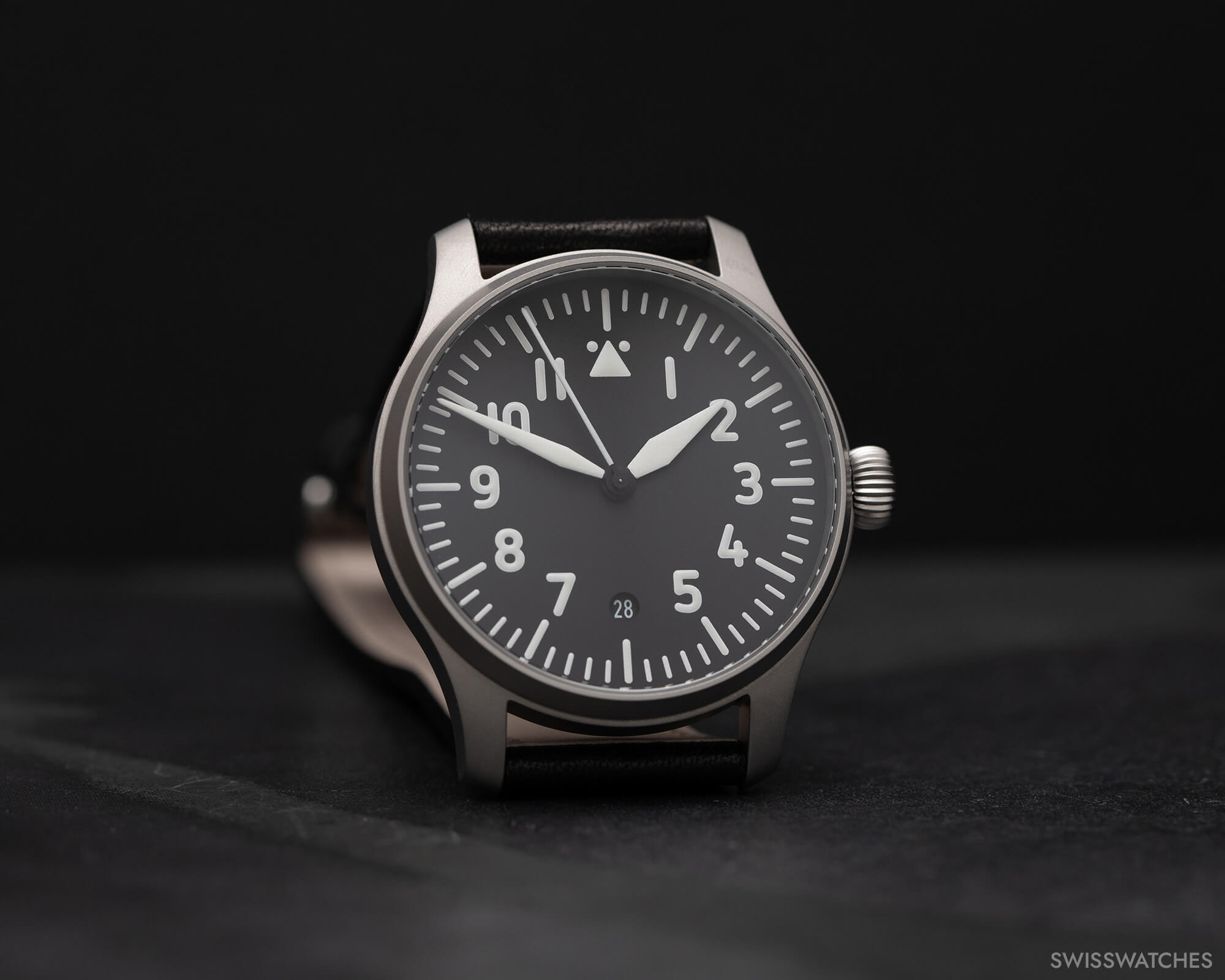
The brand is particularly popular with those who appreciate the uncluttered design of the dial, the interesting history behind the watch, and the design that is recognisable in just a few seconds. And with success: of the approximately 4,000 watches that Stowa produces each year, more than half of the watches sold are from the Flieger collection.
The current collection
At the heart of the current Flieger collection, Stowa produces pilot’s watches that are modelled on the two historical versions of the B watch: model A, which was produced in 1940 and can be regarded as the original design of the German pilot’s watch, and model B, which was added around 1942 and is characterised by a smaller inner hour circle. It is therefore the declared aim of both versions to orientate themselves on the once established formula of the pilot’s watch, and thus enable optimum legibility of the dial.
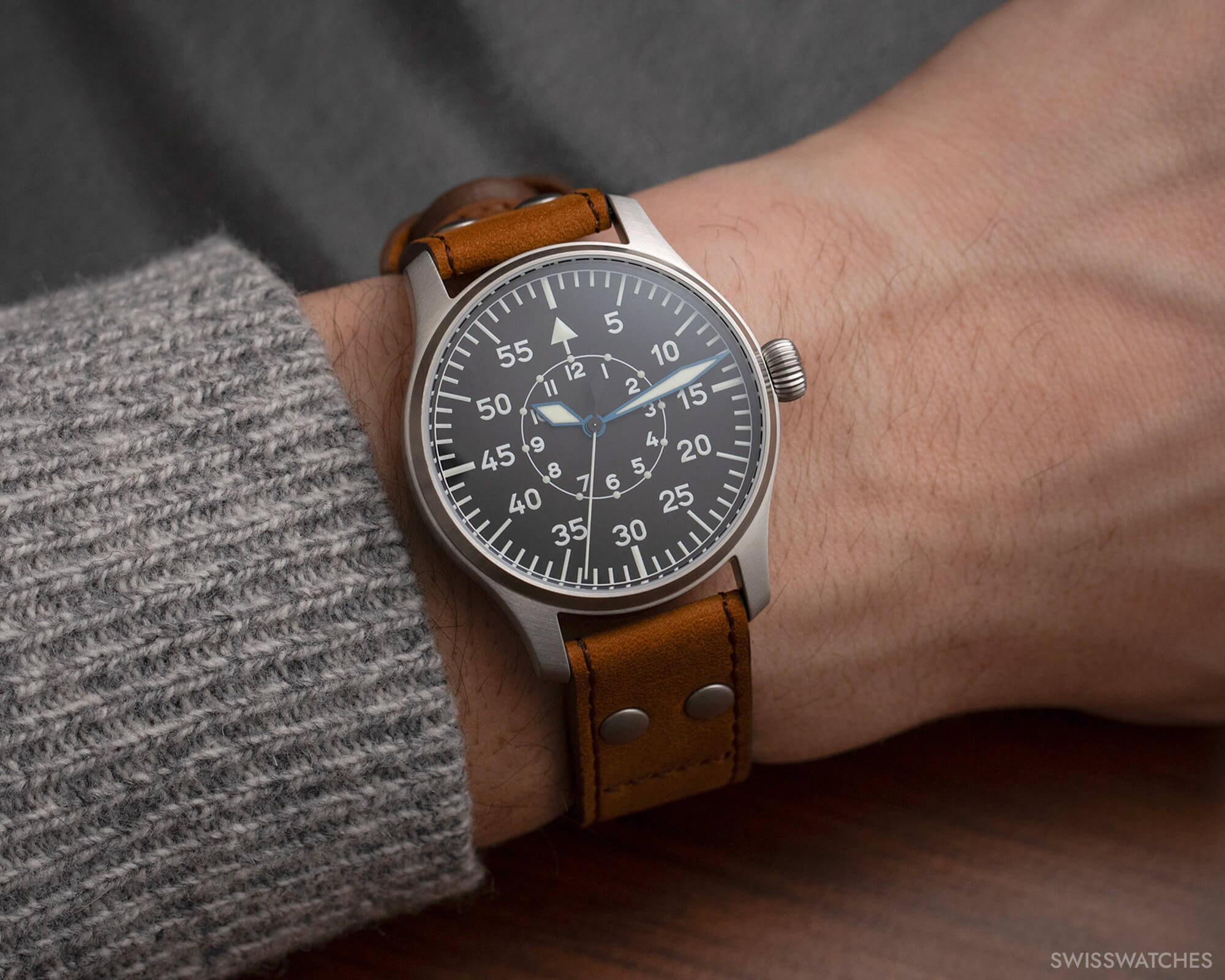
The Flieger Klassik according to the B model
In the case of the Flieger Klassik, according to model A and B, aka the modernised version of the original from the 1940s and the brand’s bestseller, this means that the watch picks up on the classic features of the original version: it has an oversized dial and blued steel hands that are filled with a luminous material to ensure good legibility even at night. Another classic feature is the clear, high-contrast minute track and the luminous triangle with two luminous dots at the 12 o’clock position. Variations such as the Flieger Classic 6498 with a small seconds display or the sports version with a 43 mm case complete the collection.
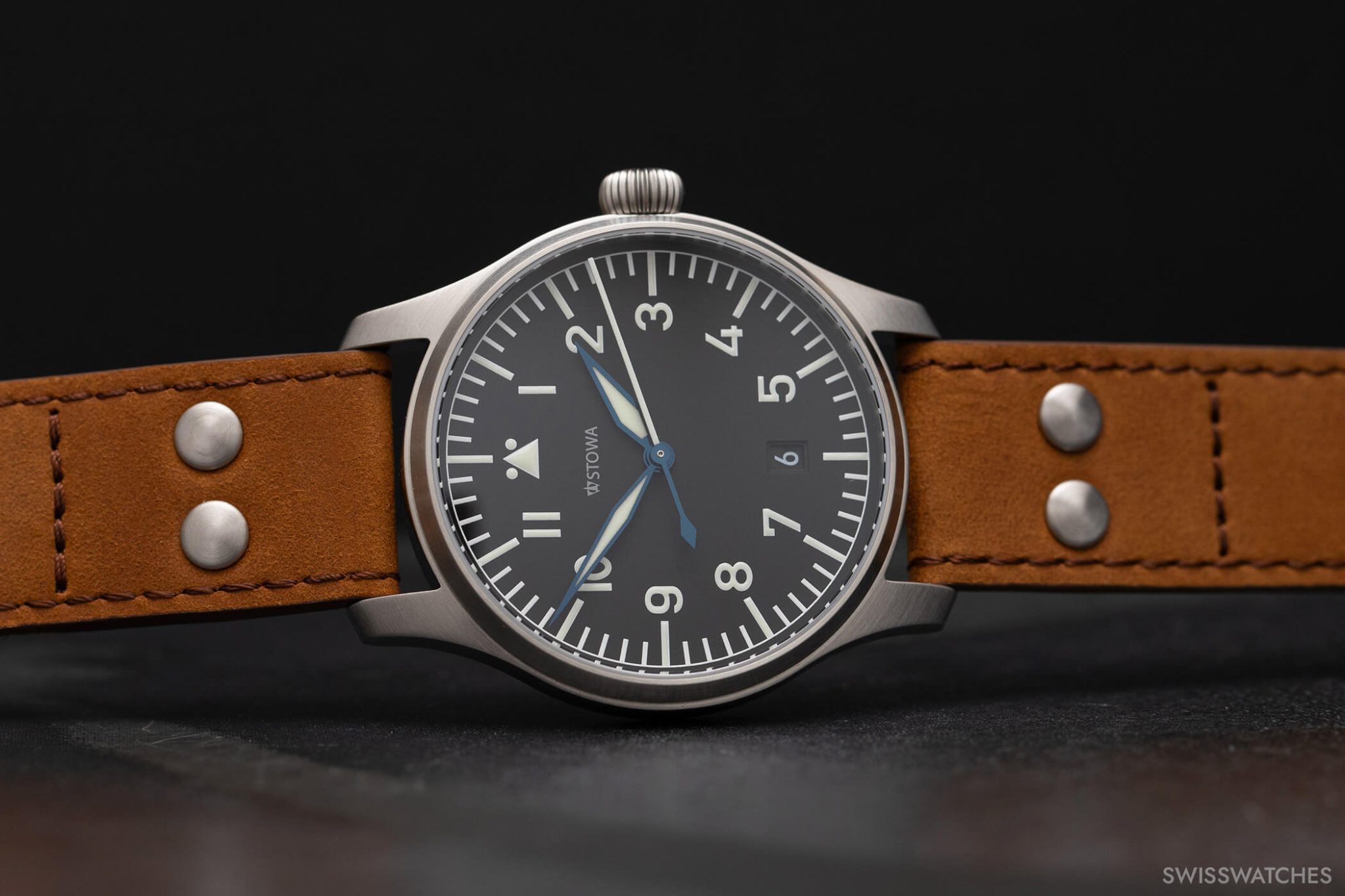
The Flieger Klassik with logo and date display
The Flieger Verus model A and B also offers an even more minimalist and modern design than the classic version. The black dial of the versions available in 36, 40 and 42 mm also feature white hands, rounding off the collection.
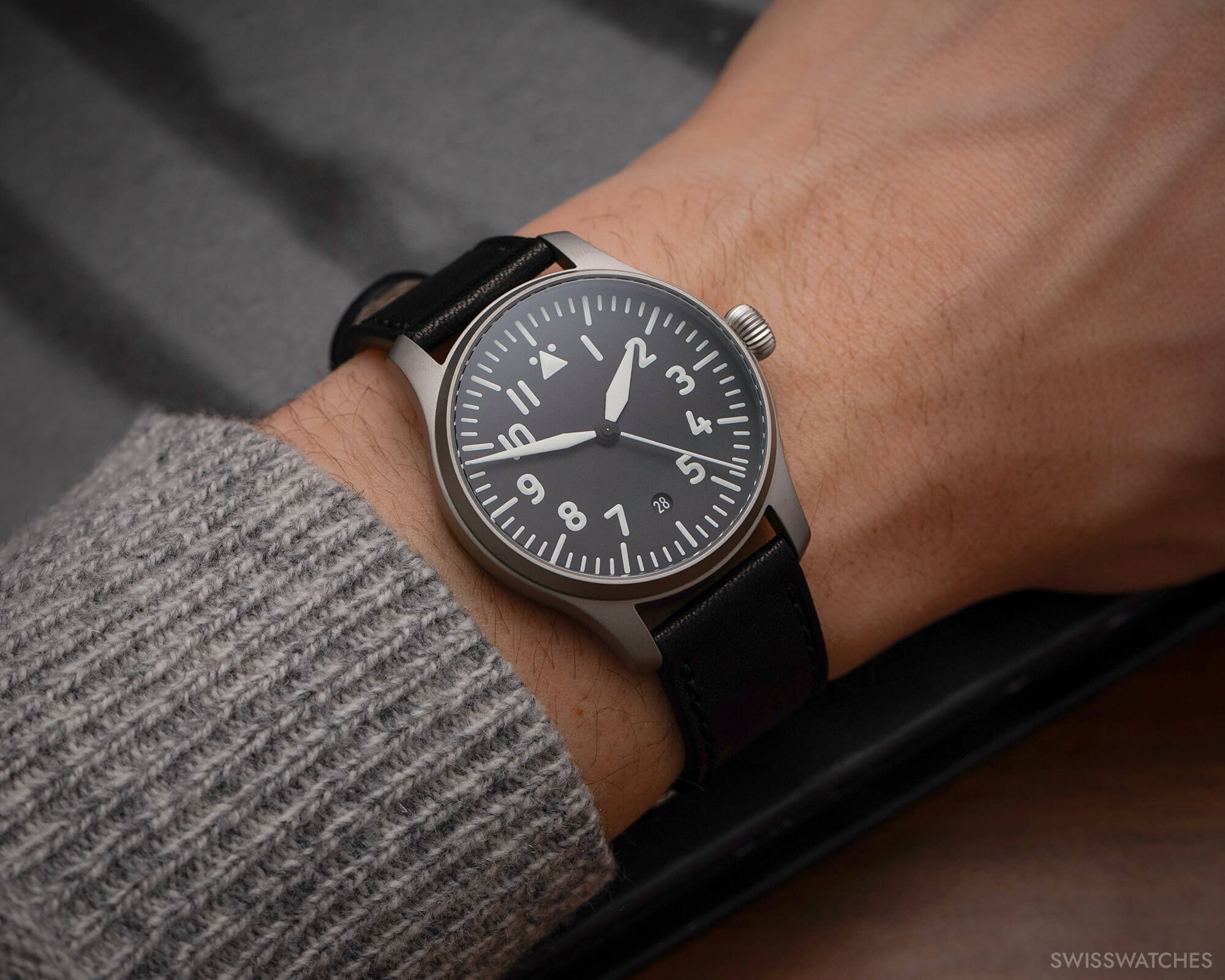
The Flieger Verus with date display
By contrast, the Flieger Bronze Vintage exudes a real old-school feel. The hands and numerals are coated with a luminous ‘Old Radium’ colour, while the bronze case likewise emphasises the vintage look. The special feature: each bronze case is aged to create a vintage look from the moment of purchase.
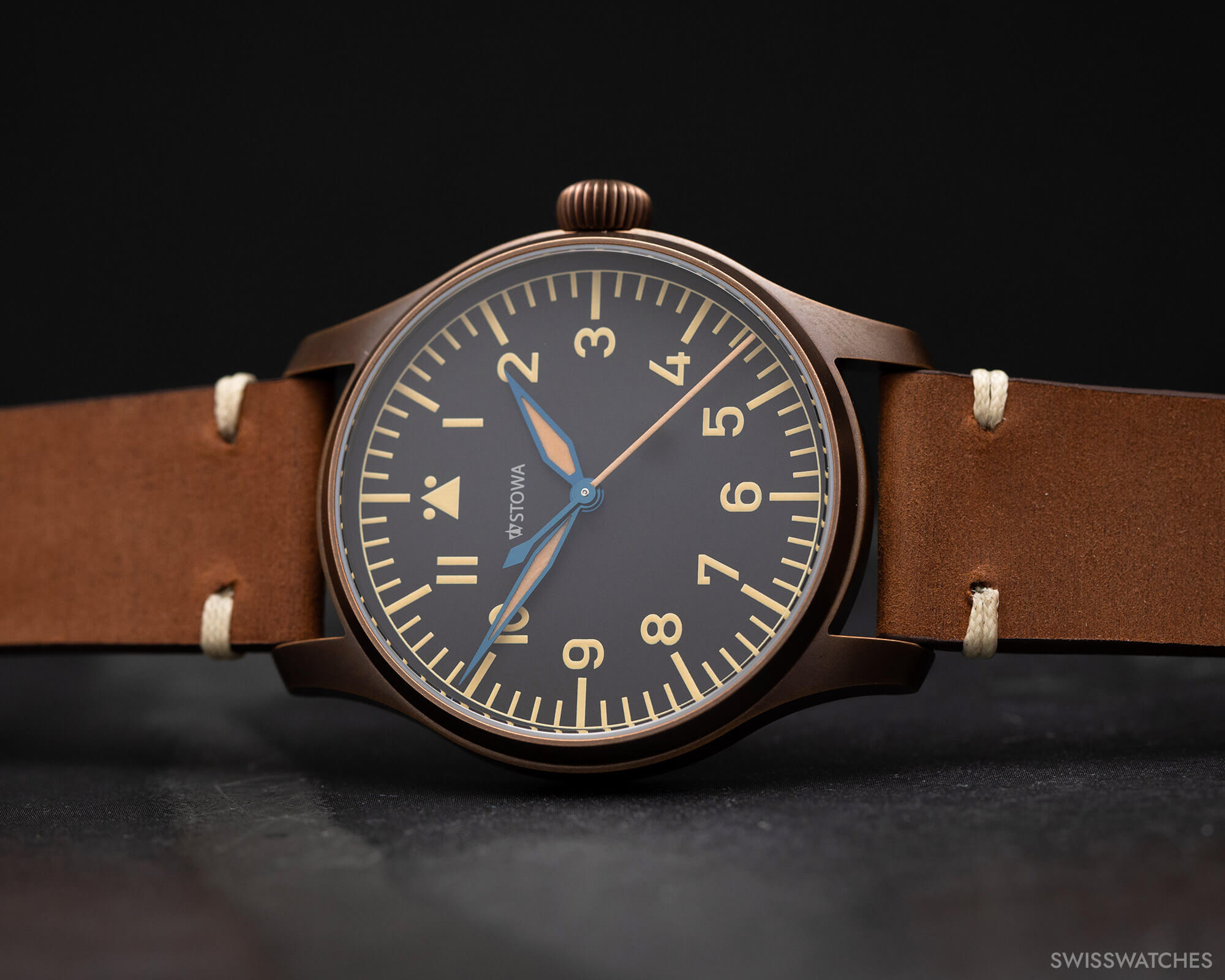
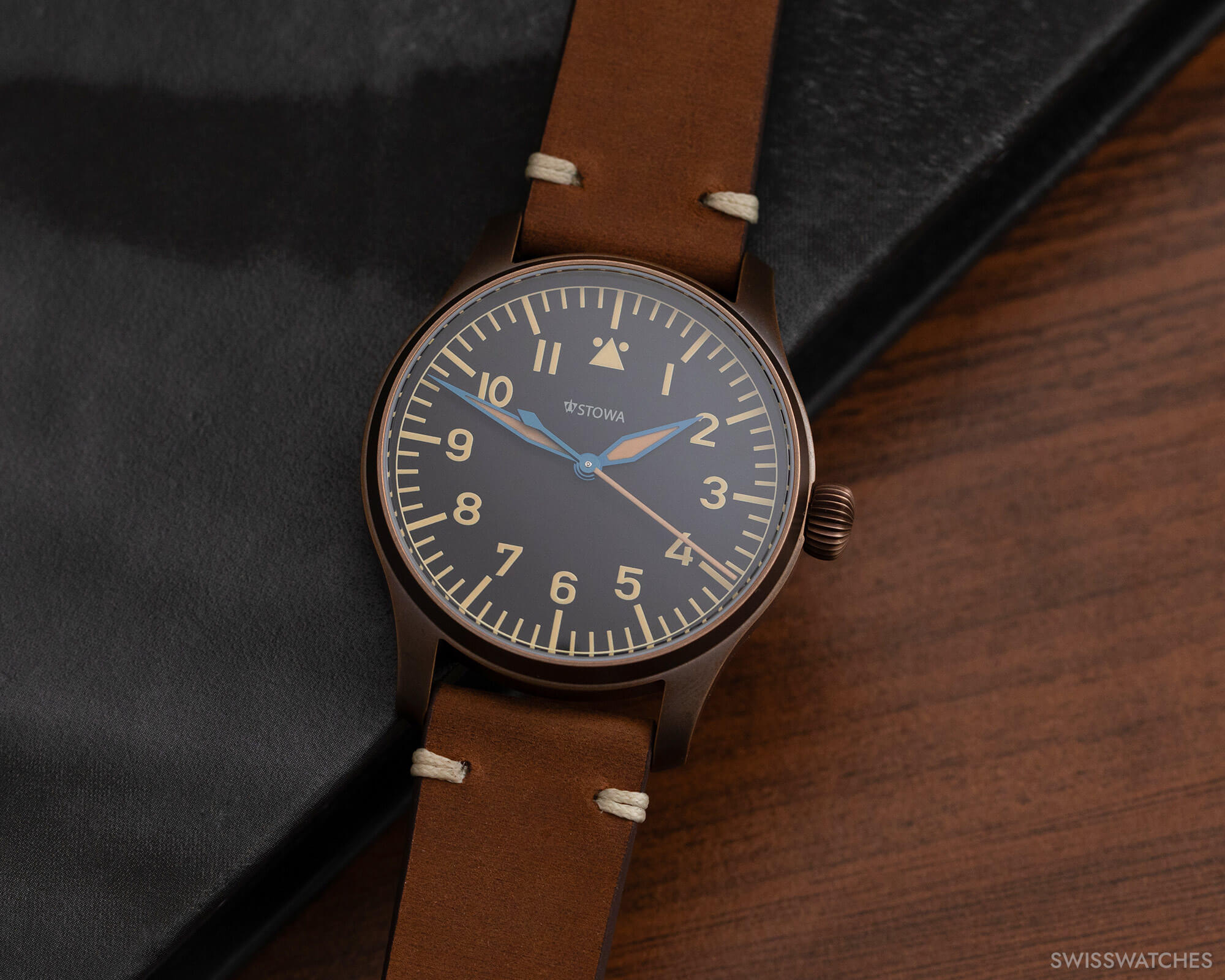
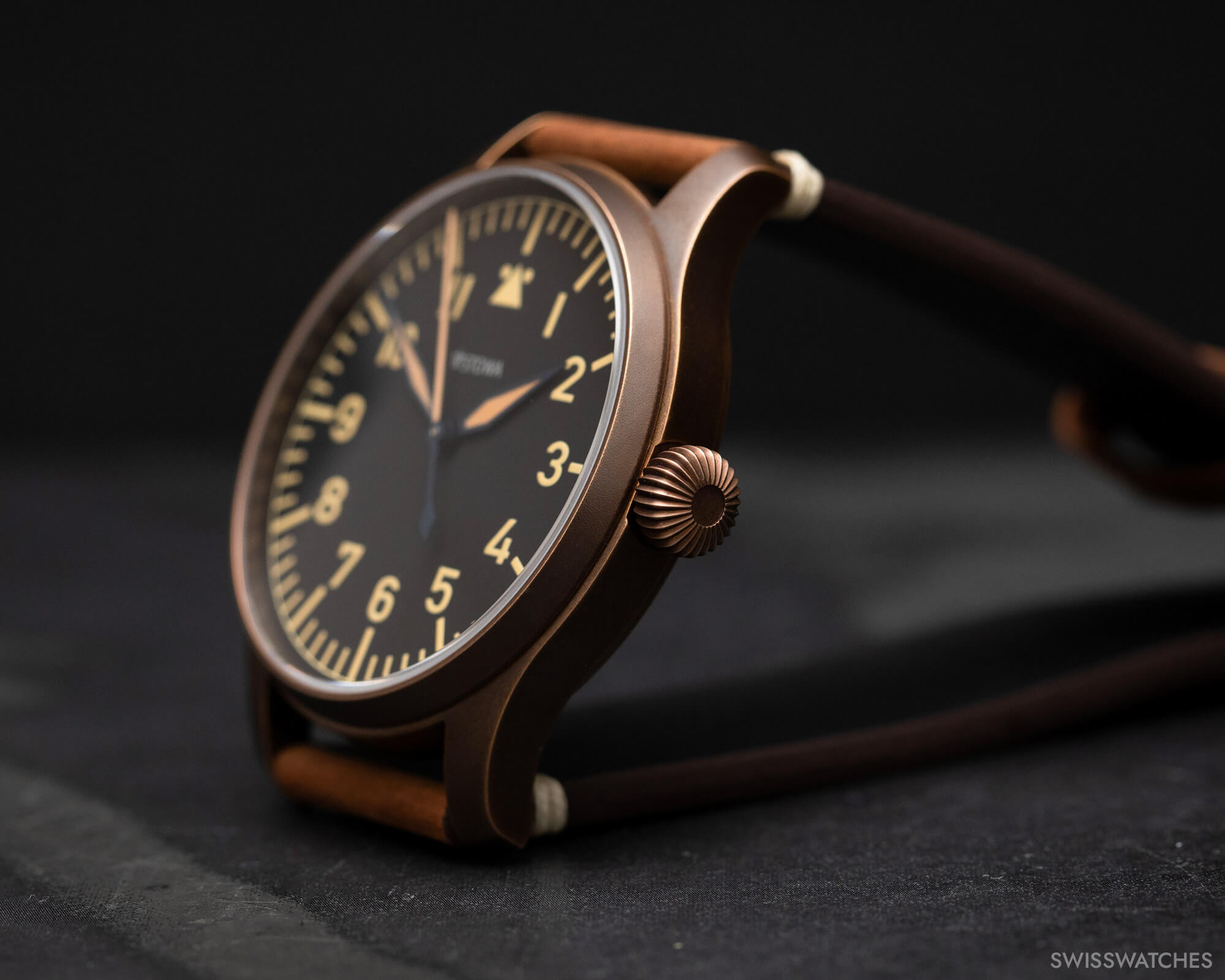
The Flieger Vintage Bronze in 40 mm
Authenticity as a business model
Stowa’s production facility is located in Pforzheim, a small German city with a rich tradition in jewellery manufacturing and watchmaking. This tradition began back in 1767, when Margrave Karl Friedrich von Baden laid the foundations for a jewellery and watch factory, making Pforzheim a centre of German jewellery production. Today, the city is home to many small and medium-sized companies that specialise in the manufacture of jewellery, watches, and gold products. Pforzheim is a down-to-earth part of the world, with deep ties to the region.
At Stowa, this grounded approach means that the authenticity that plays such an important role in the watches also flows into the production as well as the philosophy of the brand. The company attaches great importance to achieving the best possible quality within the comparatively low price segment in which it operates. To maintain this reputation, Stowa’s premise is not only to select material suppliers that fulfil the quality criteria, but also to carry out as many production steps as possible in-house.

In concrete terms, this means that the watches are completely assembled in-house and the cases are polished, matt-finished and sandblasted in various processes. In order to achieve the typical Stowa aesthetic on the dial, the brand also applies its production expertise to the laser engraving of its dials with subsequent dial printing and manual colour application on the bezel inlays. The bronze ageing process, which gives the watches their vintage look, is also carried out in-house.
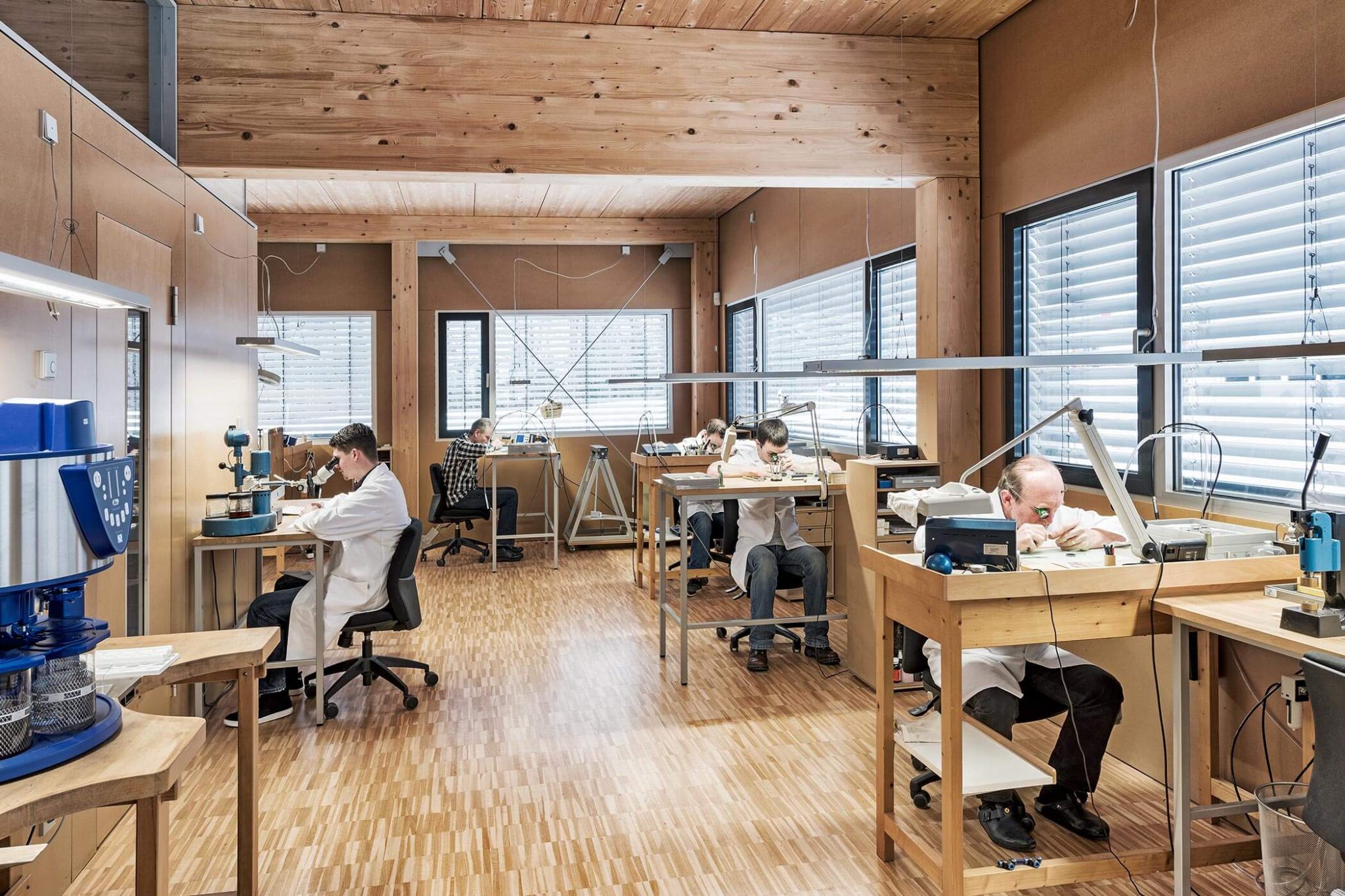
Even then, as is still the case today, Stowa only uses Swiss movements in its watches. The brand’s pilot’s watches are mainly fitted with the hand-wound Sellita SW 210 calibre, or the Sellita SW 200 if you opt for the automatic versions. The models with a small seconds display also feature the hand-wound Unitas 6498-1 calibre. The automatic movement also has a further reference to the original. Stowa then engraves the following information on the rotor, which used to be visible on the inside of the case back of the historic pilot’s watches: Type, production number (Gerätnummer), movement designation (Werknummer), order number (Anforderz) and the manufacturer (Hersteller).
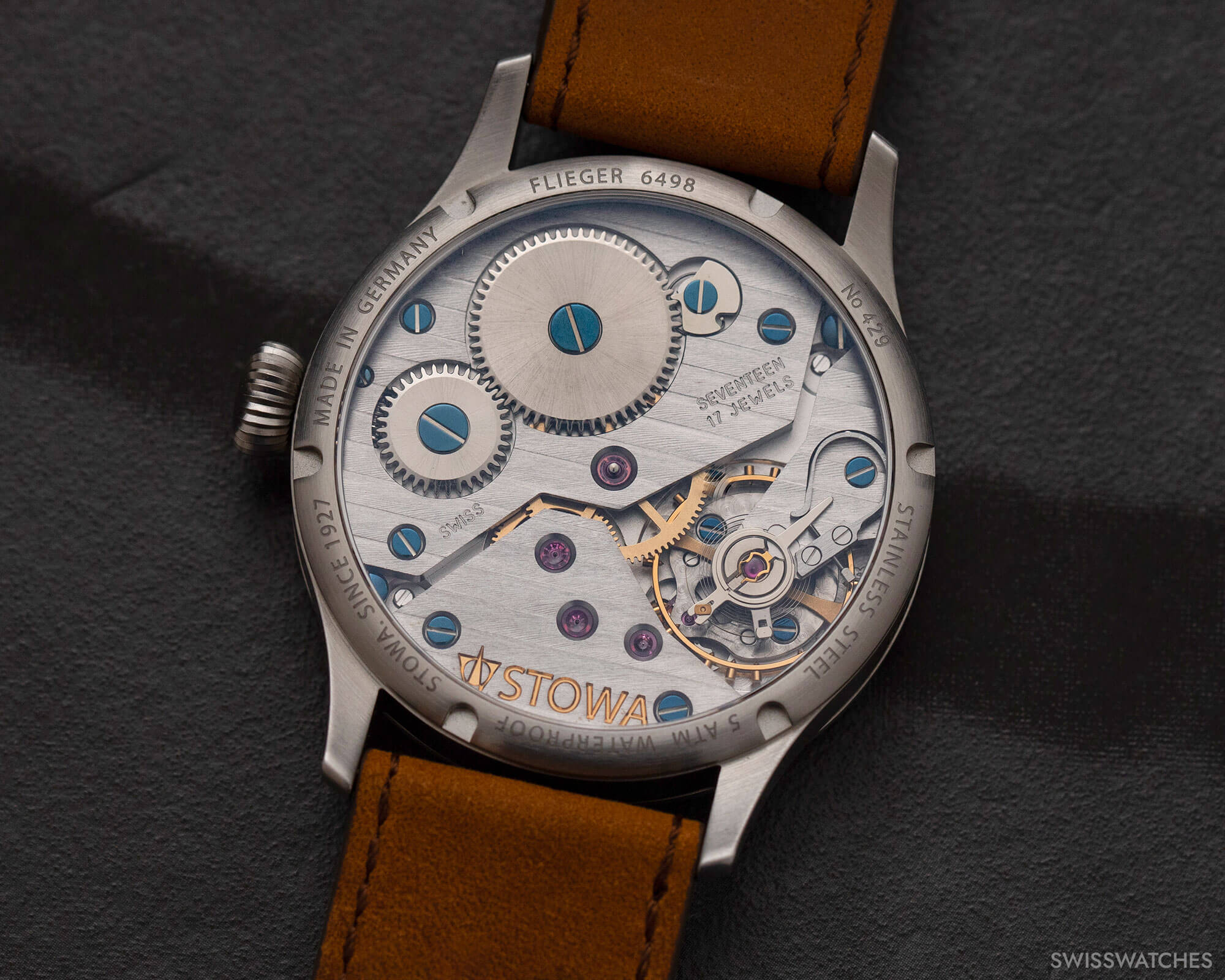
Another practical approach can be seen in Stowa’s decision to enable personalised engravings for the customer. During the ordering process, which is only possible online as Stowa does not have any stationary retail outlets, customers can personalise their watch to a high degree with case or rotor engravings for an additional charge.
The appeal of the Stowa pilot’s watch
Through the production of its pilot’s watches, the brand continues what was once established with the original B watches. The appeal lies not only in the history of the watch’s creation, but also in its memorable appearance. The use of a robust and reliable Sellita movement, long-standing material suppliers, and down-to-earth pricing enable the brand to offer its bestseller, the Flieger Classic 40 mm Automatic, from just €1,250. It is therefore the combination of proven quality, high-quality materials used in the watches and a convincing price-performance ratio that makes the Flieger watches from Stowa so attractive.
